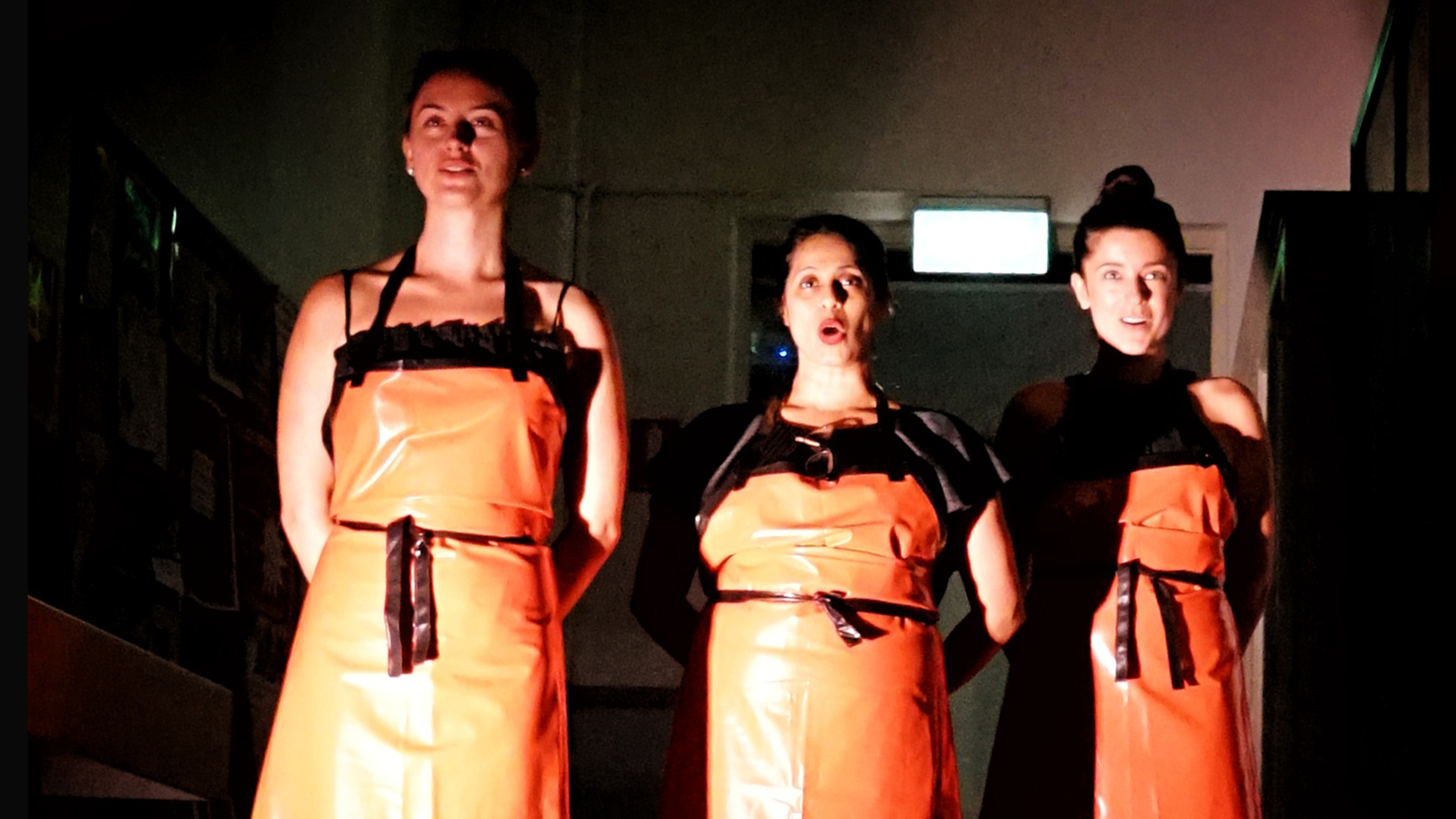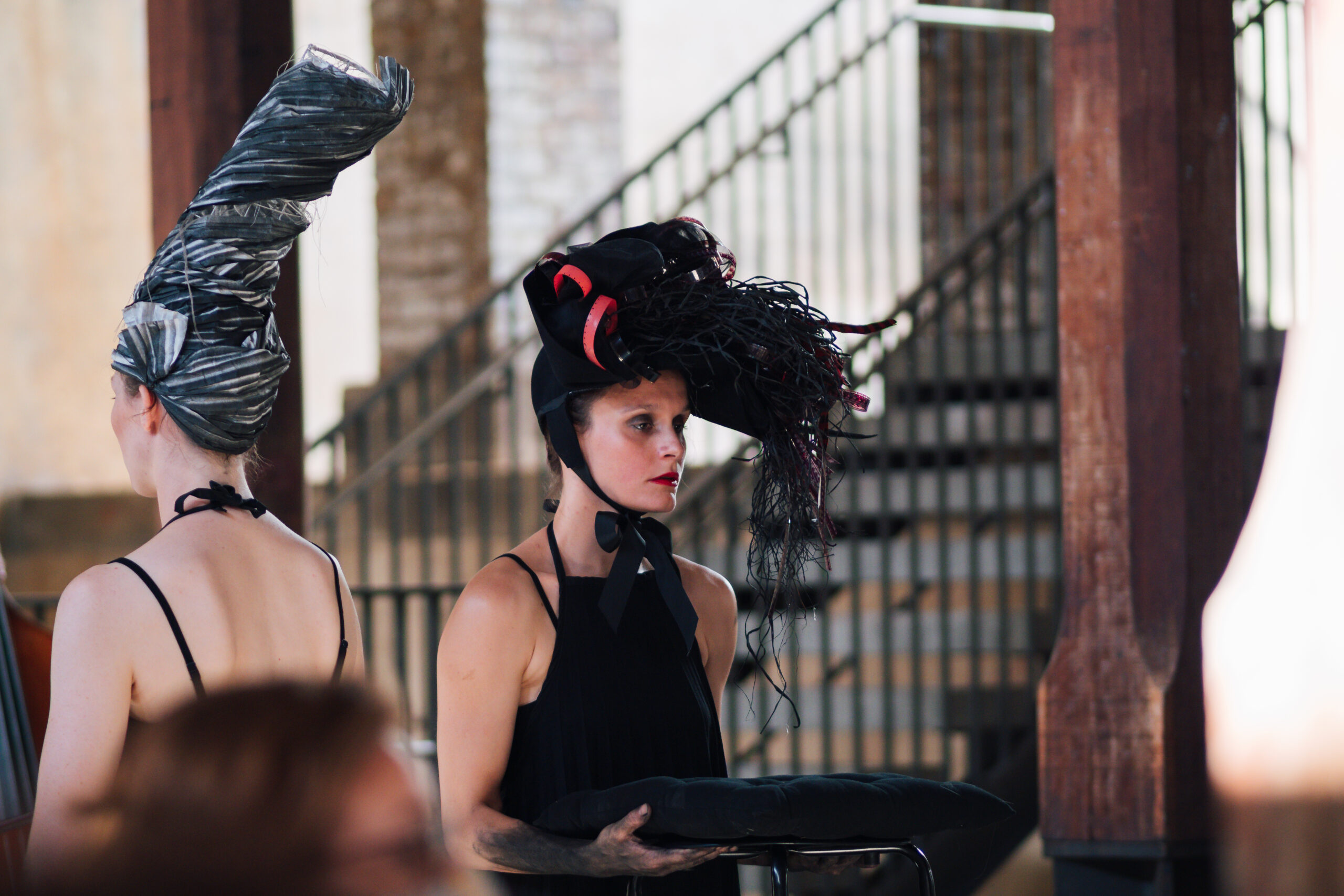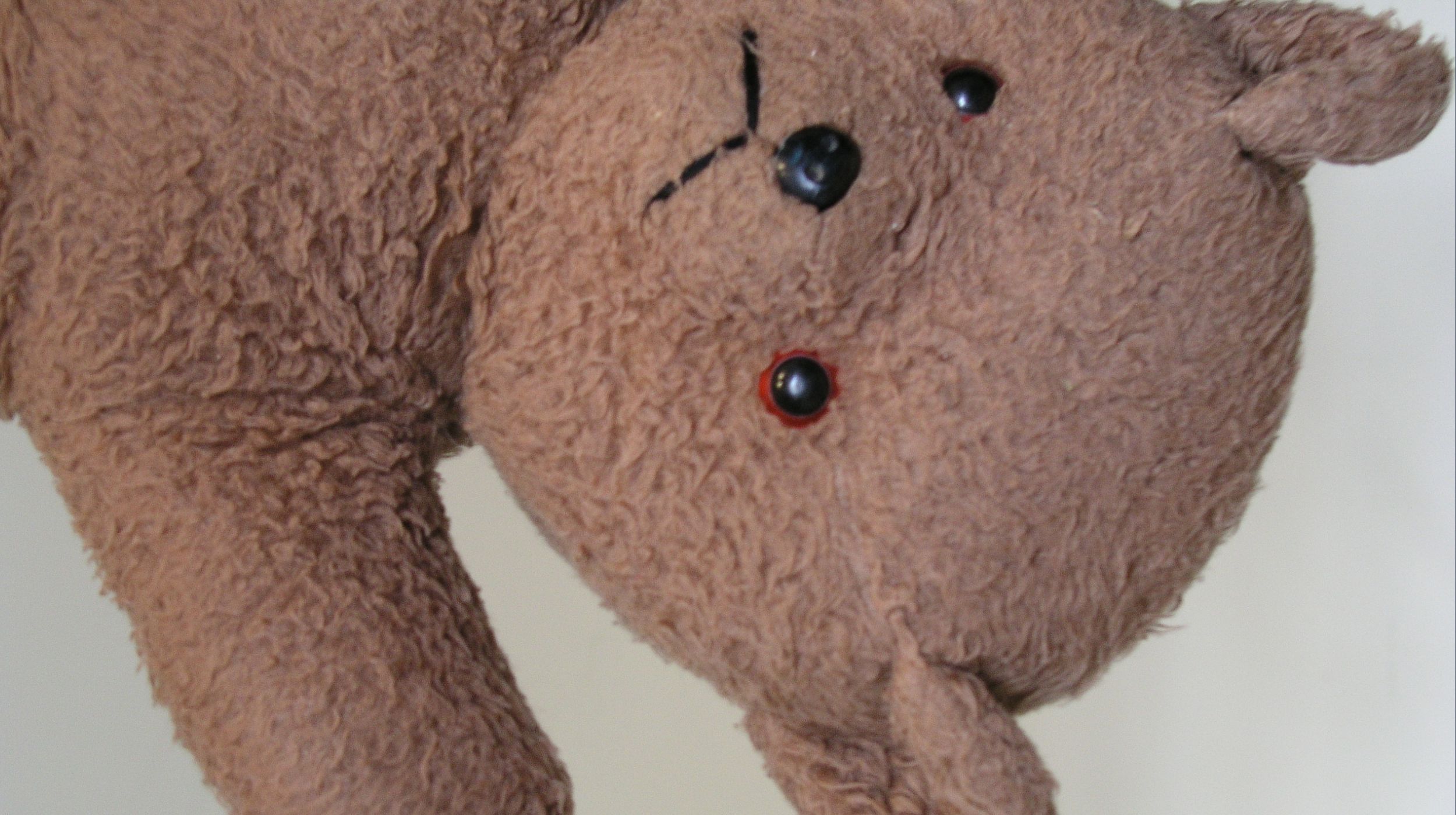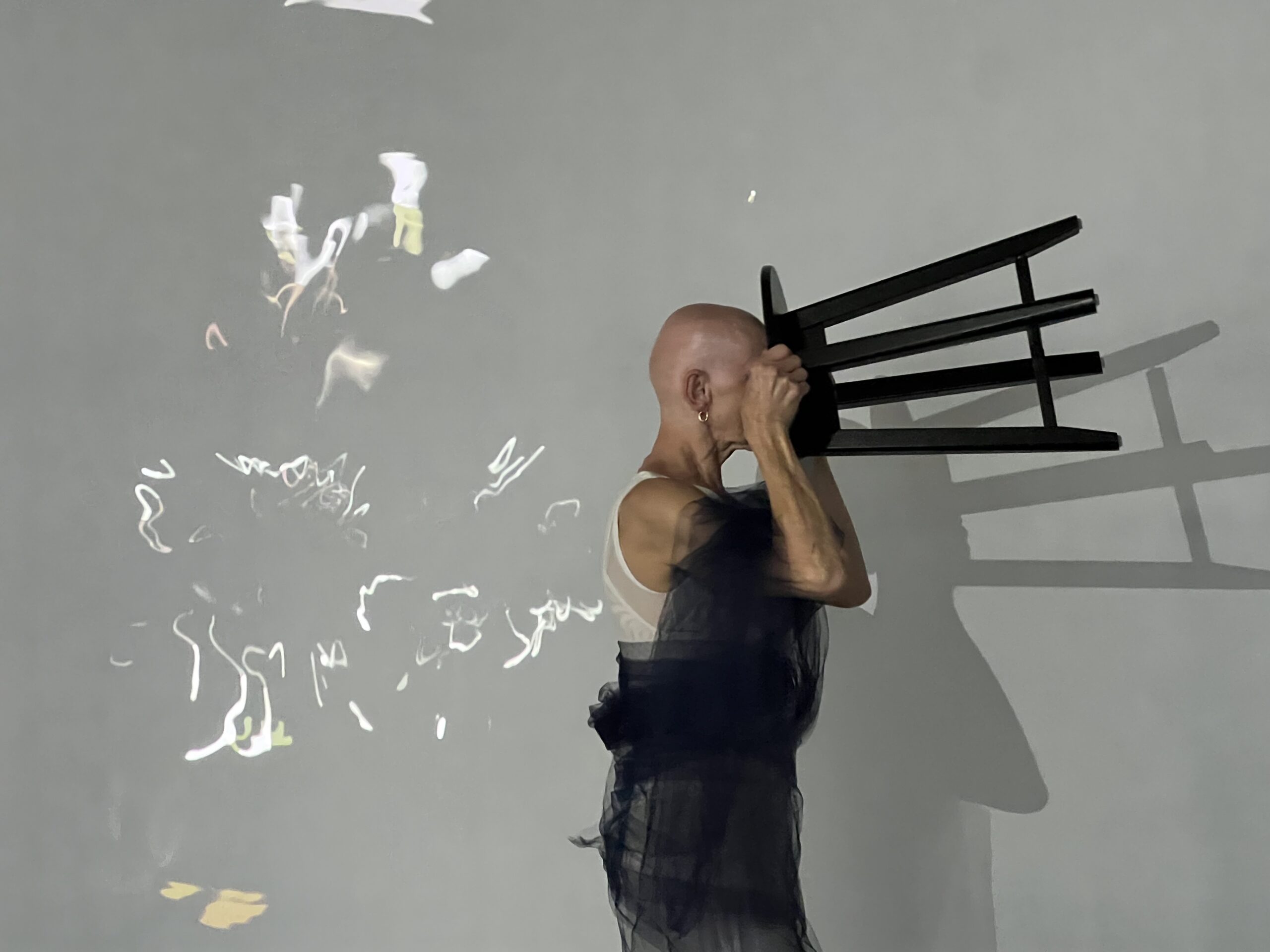
Behind the Curtain…
22.03.2017
The Research and Inspiration for ‘Black Crows’ – Part 3
‘Black Crows’ gathers a diverse range of artists, performers, researchers and activists who respond to these ideas through performance, dance, sound, field recordings, voice samples, climbing, and lecture, allowing the audience to reflect on the content in an emotional and intellectual way. In part three of the ‘Behind the Curtain’ blog series, we feature a Q&A with interdisciplinary artist, architect, and academic Ainslie Murray, who answers our questions about the installation artwork she created for ‘Black Crows Invaded Our Country.’
Ainslie created a vessel for ‘Black Crows’ called Humane Hostilities. Ainslie’s artist statement below describes the artwork.
This is a vessel. It is made from bird spikes. The bird spikes are sold as a ‘humane’ form of species control. Though beguiling in gleam and form, they embody an unthinkable hostility toward the other. Were they to speak, you could barely withstand the torrent of abuse. This vessel, constructed as a humane form from hostile objects, inscribes a passage through the world. It marks both earth and atmosphere as it simultaneously marks those it carries. In its wake is an unknowable and perhaps unspeakable history. The inscription of the passage is a record of loss – a record which is immediately obliterated by the fluid ocean and air, but which is again made visible through the mystery of daily physical displacement. Look to the bird that flies past you just now and to the person that stands quietly beside you. There is nothing you can say to explain your hostility.
What drew you to contribute to a project like ‘Black Crows?’
I see Black Crows as an important opportunity for creative interdisciplinary scholarly dialogue. I was moved by Thom van Dooren’s thoughtful meditations on the Black Crows and felt that I could expand some of the ideas by developing a provocative visual response. The diversity of contributors to Black Crows is impressive, and I feel very lucky to be able to work with such an excellent array of thinkers, performers, and makers.
‘Black Crows’ draws on a variety of themes including, issues of human migration, crow/ human vulnerability in the Anthropogenic age and the topography of the space. Have your past artistic or academic works explored these themes?
My work is very much about edges, and about the significance of crossing implied boundaries between ideas, disciplines, geographies and modes of artistic practice. I work mostly in installation and often focus on the relationship between body, experience, terrain and architectural space. My past works have included a walking piece that focussed on tracing the origins of Himalayan river systems on the Char Dham pilgrim route, and an installation piece that grafted an image of a destroyed souk in Aleppo onto a disused tunnel at the Coal Loader in North Sydney. I’m increasingly working in the space of interdisciplinary collaboration and frequently work with scientists, engineers and other performance and media artists – these collaborations expand the thematic content of my work and enable me to reach broad and diverse audiences.
How would you describe the installation piece you have created for ‘Black Crows,’ and how does it contribute to the overarching story that is being told?
I have made a vessel that invites thought on the connections between species control and human migration. It is made from prefabricated acrylic bird spikes – ‘harmless’ objects that are attached to buildings to prevent birds from landing on them. The installation of bird spikes on buildings transforms the idea of shelter into a hostile, fortified zone that welcomes some and excludes others. The vessel explores this idea of measured hospitality in that it marks the landscape it moves through, and it simultaneously marks those who occupy it. It reflects the complex two-way impacts attitudes around species control and human migration that are entirely dependent upon which perspective one adopts or is able to adopt.


